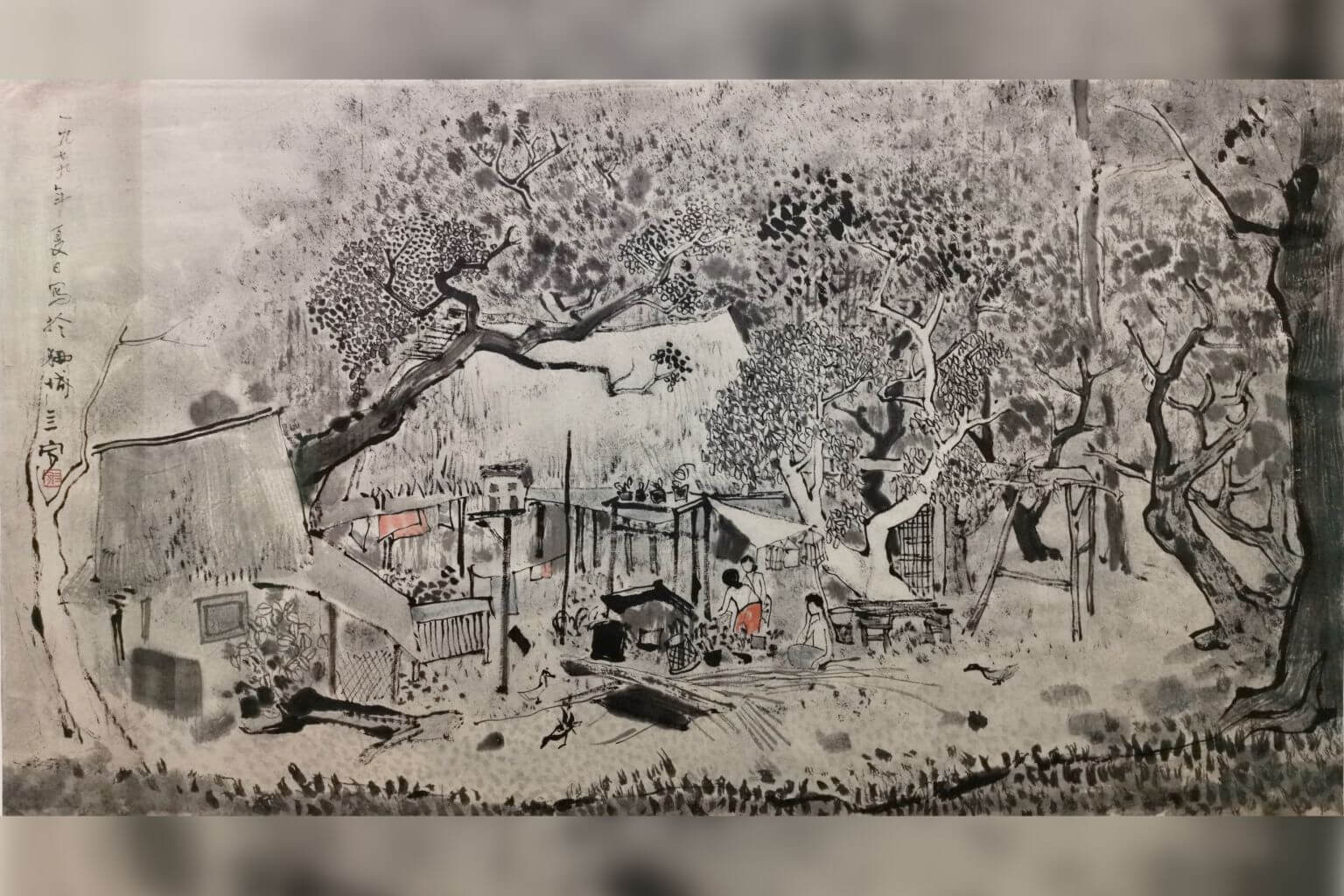Rarely-seen ink works by Singapore pioneer artist Cheong Soo Pieng go on display
Sign up now: Get ST's newsletters delivered to your inbox

Untitled (1979), a Chinese ink and colour on paper work by pioneer artist Cheong Soo Pieng on display at Artcommune Gallery.
PHOTO: COURTESY OF ARTCOMMUNE GALLERY
Follow topic:
SINGAPORE - A dozen rarely-seen ink works by pioneer Singapore artist Cheong Soo Pieng are on display at Artcommune Gallery until Sunday (Sept 15).
These exquisitely composed paintings - some of which have been painted onto rattan or sewn onto hanging scrolls - were created by the artist between 1978 and 1983, the year he died, and form an under-studied part of his oeuvre.
Viewers may find much to admire in these ink works, which bear the influence of Song dynasty aesthetics - such as the clever use of negative space, and a sense of man's harmony with nature.
Some of the artist's earlier ink works are also on display at the gallery in Victoria Street.
Cheong, often regarded as a pioneer of East-West modernism, was born in Xiamen in 1917. He studied at the Xiamen Academy of Fine Arts and the Xinhua Academy of Fine Arts in Shanghai, before moving to Singapore in 1946, where he taught at the Nanyang Academy of Fine Arts. His Drying Salted Fish painting appears on the back of Singapore's $50 note.
Cheong made two trips to China in the 1970s, after which his ink works started to reflect the influence of Song dynasty painting. He completed around 50 such pieces.
The late works at the exhibition range from a 1983 Chinese ink on rattan work depicting Balinese figures, to an undated scene from Yehliu, a landscape of sea-eroded rocks on the north coast of Taiwan that is notoriously difficult to paint.
-
VIEW IT/ CHARTING NEW WATERS: A STUDY OF CHEONG SOO PIENG'S LATE INK WORK
WHERE: artcommune gallery, 76 Bras Basah Road, 01-01 Carlton Hotel (along Victoria Street)
WHEN: Till Sunday (Sept 15), from noon to 7pm daily
ADMISSION: Free
INFO: www.artcommune.com.sg
A ticketed talk on Cheong Soo Pieng will run at the gallery on Friday (Sept 13), from 7pm to 9.30pm. Tickets cost $25 per person (fee to be collected during the event).
To register, e-mail valerie@artcommune.com.sg or visit https://docs.google.com/forms/d/e/1FAIpQLSeHxU6J7Pp7tDcBvbUmFT1M4Y3o7Xb…
Artcommune Gallery's founder Ho Sou Ping says that Cheong's late ink works are less understood by scholars and collectors as there have not been many opportunities to view them. It is likely that most of the works on display - held by the artist's family until now - had been produced for a show in China, which failed to materialise after the artist died.
"This show provides an opportunity for us to look at the works, because not only it tell us about his artistic thinking but his working methods and materials used," Mr Ho says, pointing to the artist's use of materials such as rattan, as well as evidence that he mounted some of the scroll paintings himself.
This exhibition, he adds, reflects Cheong's ambition to be at the top of the Chinese art scene. "He planned to go to China and show his works - not as an ordinary artist, but as an innovator."

